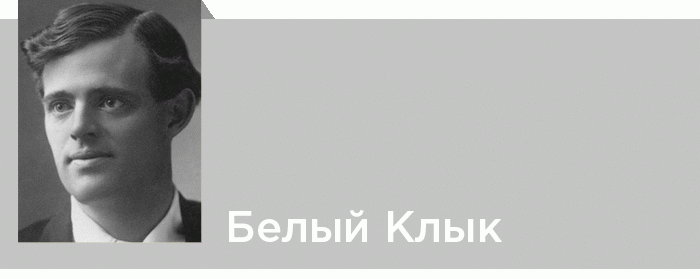Концептуализация пространства в цикле «Северных рассказов» Джека Лондона

В. М. Лютянский
В настоящее время когнитологи сходятся во мнении о том, что в формировании языковых систем определяющую роль сыграл опыт визуально-пространственного восприятия мира. Художественное пространство и время являются важнейшими составляющими литературного текста, участвуя в его комплексном идейно-художественном анализе1. «Пространство - одна из первых реалий бытия, которая воспринимается и дифференцируется человеком. Оно организуется вокруг человека, ставящего себя в центр макро- и микрокосмоса. Не случайно не только пространство дифференцируется подробно языковыми средствами во всех языках, но оно оказывается в основе формирования многих типов номинаций…»2. Представление о пространстве составляет существенную сторону любой мировоззренческой системы. Отражение пространственных отношений в сознании человека, их осмысление и использование в повседневной жизни и в художественных произведениях непосредственно связаны с языком3.
В художественном мире Дж. Лондона концептуальный признак «пространство» эксплицируется соотнесенностью с определенной точкой земли, с определенным местом на карте - Севером. Этот признак поддерживается словарными дефинициями: North - (usually initial capital letter) a region or territory situated in this direction4. В художественном тексте концептуальный признак «пространство» репрезентирован совокупностью топосных и локусных пространств, пространственных координат, географических имен и под.
Средства выражения концептуального признака «пространство» в рассматриваемых произведениях можно объединить в три группы.
В первую группу входят текстовые средства или заголовки:
а) название всего цикла рассказов - «Northland tales»5, выраженное лексемой с локальной семантикой Northland, которое выполняет по отношению к художественному тексту функцию номинации;
б) заголовки отдельных рассказов, такие как In the Forests of the North, The Sunlanders, To the Man on the Trail, In a Far Country, At the Rainbow ’s End, Where the Trail Forks, The Men of Forty-Mile, которые содержат лексемы с локальной семантикой North, Sunlander, trail, country, end, mile и таким образом уточняют координаты пространства, отображенного в художественном тексте.
Вторая группа включает лексические средства выражения концептуального признака «пространство», или локативы. Локативы, используемые для концептуализации пространства в рассматриваемых художественных контекстах, в свою очередь, подразделяются на две подгруппы:
единицы с центральной семой «extending without limit in all directions», безотносительно обозначающие пространство: earth, space, Universe, world и под. Например: It was a warm winter ’s day for Forty- Mile - a day in which the sky, filled with heaviness, drew closer to the earth, and the mercury sought the unwonted level of twenty below (The Men of Forty-Mile); This was the Universe, dead and cold and dark, and he its only citizen (In a Far Country) и др.;
лексемы, рисующие образ пространства, которое занимает позицию фона по отношению к конкретным географическим объектам. При этом пространственный образ может воссоздаваться как территориальное, как воздушное и как водное пространства.
Территориальное пространство концептуализируется как горизонтальное и вертикальное. Представления о горизонтальных территориальных пространствах актуализируются следующими способами:
посредством прямых номинаций с центральной семой «extending without limit»: land(s), inland, country, territory, tundra и под. Например: On the one hand stretched the barren snow land; on the other, the frozen sea (Jan, the Unrepentant); That this was such a moment he had no doubt; and when he turned inland and sped across the snow-covered tundra he was not startled because the shadow took upon it greater definiteness and drew in closer (Which Make Men Remember) и др.;
территориальные пространства отображаются посредством топонимов. Например: Off to the South Seas on a yacht, then a nibble of Paris; a winter in South America and a summer in Norway; a few months in England (The Scorn of Women) и др.;
для прорисовки территориальных пространств используются обозначения разнообразных населенных пунктов: post, station, city, village, fort, mission и др. Например: No dogs, no nothing, the sea closed, St. Michael the nearest post, runners to carry the news before you, the same over the portage to Anvik - not a chance in the world for you! (Which Make Men Remember); And then she died, in the heart of the winter, died in childbirth, up there on the station (Siwash); и др.
Вертикальное территориальное пространство отображается двояко:
а) с помощью слов, которые называют расположенные выше уровня земли природные объекты или их части: mountain, hill, rock и др. Например: But her thoughts were far away, across the Ice Mountains to the east, to the little corner of the earth where her childhood had been lived (Li-Wan); It was a homogeneous scene, devoid of contrasts or bold contours, dreary, desolate, and monotonous, - the ice-packed sea, the slow slope of the beach, the background of low-lying hills, and over (Jan, the Unrepentant) и др.;
б) посредством названий разнообразных плоских участков земли, ущелий, дна водоемов: gulch, valley, flat, plain, bottom и под. Например: And midway on that strange plain which should have been a valley, the earth and the snow fell away, straight down toward the heart of the world (An Odyssey of the North); The stove was red and roaring hot, but only a bare three feet away lay a block of ice, as sharp-edged and dry as when first quarried from the creek bottom (Grit of Women) и др.
Воздушное пространство в художественных контекстах концептуализируется, в основном, как вертикальное. Маркерами вертикального воздушного пространства являются:
во-первых, слова sky, heaven(s), air с категориальной семой «space above the earth». Например: All movement ceases, the sky clears, the heavens are as brass (In a Far Country); ...and in the day the sun-dogs mocked us till we saw many suns, and all the air flashed and sparkled, and the snow was diamond dust (Where the Trail Forks) и др.;
во-вторых, лексемы star, sun с общим значением «celestial object». Например: That Schwabian folk-song sounded strangely pathetic under the cold northern stars, and did not do the men good who lounged about the fire after the toil of the day (Where the Trail Forks); With this, and her boy, she journeyed countless sleeps toward the winter’s noonday sun (The Son of the Wolf) и др.
Горизонтальное воздушное пространство репрезентировано единицами horizon, sky-line. Например: The darkness was at its worst, and at midday the sun could not clear the sky-line to the south (The God of his Fathers); Along the northern horizon a rosy glow, fading to the west and deepening to the east, marked the unseen dip of the midnight sun (The God of his Fathers) и др.
Концептуализация водного пространства в художественных произведениях Дж. Лондона осуществляется преимущественно горизонтально. Наиболее часто с этой целью используются топонимы: the Yukon Delta, Bering Sea, the Lynn Canal и др. Например: But he was none the less a striking personage to these simple fisherfolk of the great Yukon Delta, who, all their lives, had stared out on Bering Sea and in that time seen but two white men, the census enumerator and a lost Jesuit priest (Nam-Bok the Unveracious) и др. Среди топонимов встречаются как местные названия, так и названия, созданные некоренным населением: the Koyukuk, Tanana, Minook, the Stuart River и др. Например: Hay Stockard finished his pipe by the fire, picturing in smoke and coal the unknown upper reaches of the Koyukuk, the strange stream which ended here its arctic travels and merged its waters with the muddy
Yukon flood (The God of his Fathers); Then on, into the northeast, past Tanana and Minook, till they rounded the Great Curve at Fort Yukon, crossed and recrossed the Arctic Circle, and headed south through the Flats (Make Men Remember) и др.
В рассматриваемых художественных контекстах фиксируется значительное количество гидронимов: river, sea, current, lake, stream, flood, creek, delta и др. Например: The Hudson Bay post at Fort Yukon had other notions concerning the course of the river, believing it to flow into the Arctic (The God of his Fathers); Mandell is an obscure village on the rim of the polar sea (The Sunlanders); One vaire rich mine is there, on the creek which is Eldorado (A Daughter of the Aurora) и др.
К грамматическим средствам выражения концептуального признака «пространство» в произведениях Дж. Лондона относятся следующие группы слов, передающие релятивное содержание пространственных элементов и связей:
а) предметные существительные пространственной семантики: tent, cabin, corner, igloo, hunting-camp и под. Например: Blinded, falling, crawling on hand and knee, the wind thrust back in her throat by the wind, she was heading for the tent (Siwash); The intense frost could not be endured for long at a time, and the little cabin crowded them - beds, stove, table, and all - into a space of ten by twelve (Odyssey of the North) и др.;
б) глаголы с семантикой перемещения в пространстве: to stretch, to journey, to travel, to pilgrim, to go, to trail, to disembogue, to return, to enter и под. Например: Skirting the shores of the bay, where the Mackenzie disembogues into the Arctic Ocean, they entered the mouth of the Little Peel River (In a Far Country); The Northland is the Northland, and men work out their souls by strange rules, which other men, who have not journeyed into far countries, cannot come to understand (In a Far Country) и др.;
в) обстоятельственные наречия, характеризующие пространство относительно субъекта: about, near, closer, to his right и под. Например: ...and when he turned inland and sped across the snow- covered tundra he was not startled because the shadow took upon it greater definiteness and drew in closer (Which Make Men Remember); To his right, at his shoulder, crouched Chugungatte, the shaman (In the Forests of the North) и др.;
г) местоименные наречия места there, here, up, down. Например: So here and there we cached grub, that our sleds might be lightened and there be no chance of famine on the back trip (Odyssey of the North); All Dawson was wrought up over the affair, and likewise the Yukon-dwellers for a thousand miles up and down (The League of the Old Men) и др.;
д) предлоги пространственного значения: to, through, toward, across, beyond, under и др. Например: So journeyed this strangely assorted couple down to old Fort Selkirk, then through fivescore miles of dismal wilderness to Stuart River (The Priestly Prerogative); Sole speck of life journeying across the ghostly wastes of a dead world, he trembles at his audacity (The White Silence).
Таким образом, признак «пространство» индивидуально-авторского концепта NORTH находит широкое отражение в художественной картине мира Дж. Лондона, подтверждая мысль о том, что восприятие пространства является одним из важнейших способов познания мира человеком, включая и художественное познание.
Примечания
- Мухарлямова Г.Н. Художественное время и пространство в произведениях татарской прозы 20-30-х годов XX века // Вестн. Помор. ун-та. Сер.: Гуманит. и соц. науки. 2010. № 2. С. 82.
- Гак В.Г. Пространство вне пространства // Логический анализ языка. Языки пространств. М., 2000. С. 127.
- Логический анализ языка. Языки пространств / отв. ред. Н.Д. Арутюнова, И.Б. Левонтина. М., 2000.
- The Oxford English Dictionary. Second Edition, Vol. X. Clarendon Press. Oxford, 2000.
- URL: http://london.sonoma.edu/Writings/.
Л-ра: Вестник Северного (Арктического) федерального университета. Серия: Гуманитарные и социальные науки. 2011. № 3. С. 80-83.
Произведения
Критика











